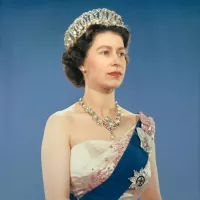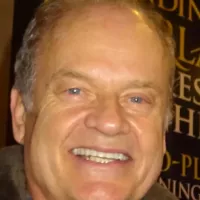Air Canada, founded in 1937, is the flag carrier and largest airline in Canada. Headquartered in Montreal, it provides scheduled and charter air transport for passengers and cargo. It serves 222 destinations worldwide, operating major hubs in Montréal–Trudeau, Toronto–Pearson, and Vancouver. Air Canada is a founding member of the Star Alliance.
1936: Creation of Trans-Canada Air Lines (TCA)
In 1936, the Canadian federal government created Trans-Canada Air Lines (TCA), which would later become Air Canada.
April 1937: Trans-Canada Air Lines (TCA) Created
On April 11, 1937, Trans-Canada Air Lines (TCA), Air Canada's predecessor, was created by federal legislation as a subsidiary of Canadian National Railway (CNR).
1937: Airline founded
In 1937, Air Canada was founded as the flag carrier and largest airline of Canada.
July 1938: First Flight Attendants Hired
On July 1, 1938, TCA hired its first flight attendants.
1938: First transcontinental flight routes
In 1938, Trans-Canada Air Lines (TCA) began operating its first transcontinental flight routes.
April 1939: Transcontinental Routes Begin
On April 1, 1939, transcontinental routes from Montreal to Vancouver began.
January 1940: Airline Growth
By January 1940, the airline had grown to about 579 employees.
1942: Merger Proposal Rejected
In 1942, Canadian Pacific Airlines (CP Air) suggested a merger with TCA, but Prime Minister William Lyon Mackenzie King rejected the proposal.
1949: Headquarters Moved to Montreal
In 1949, the federal government moved TCA's headquarters from Winnipeg to Montreal.
1953: Introduction of ReserVec
In 1953, TCA became the first airline in the world to use a computer reservation system with remote terminals, with the development of the ReserVec system.
1964: Design aspects from the logo used
In 1964 design aspects from the logo used between 1964 and 1992, were included in the new retro red and black aircraft livery launched on 9 February 2017.
1964: Bill Submitted to Change Name to Air Canada
In 1964, Jean Chrétien submitted a private member's bill to change the name of the airline from Trans-Canada Airlines to Air Canada.
January 1965: Name Change to Air Canada
On January 1, 1965, the name change from Trans-Canada Airlines to Air Canada took effect.
1965: TCA Renamed Air Canada
In 1965, Trans-Canada Air Lines (TCA) was renamed Air Canada following government approval.
1976: Air Canada Becomes Independent Crown Corporation
In 1976, with reorganization at CNR, Air Canada became an independent Crown corporation.
1976: CEO and President
Since 1976, the following have been CEO and President
1978: Air Canada Act
In 1978, the Air Canada Act ensured that the carrier would compete on a more equal footing with rival regional airlines and CP Air.
1985: Government Willing to Privatize
By 1985, the Canadian government was indicating a willingness to privatize both Canadian National Railways and Air Canada.
December 1987: Fleet-Wide Non-Smoking Policy
On December 7, 1987, Air Canada became the first airline in the world with a fleet-wide non-smoking policy.
1987: Deregulation of Canadian Airline Market
In 1987, deregulation of the Canadian airline market officially opened the airline market in Canada to equal competition.
1987: No-smoking flights tested
In the spring of 1987, Air Canada enacted no-smoking flights between Canada and New York City as a test. After a survey reported that 96% of passengers supported the smoking ban, Air Canada extended the ban to other flights.
1988: Air Canada Privatized
In 1988, Air Canada was privatized, and 43% of shares were sold on the public market.
1990: Headquarters moved to airport
In 1990, the airline moved its headquarters to the airport to cut costs.
1992: Design aspects from the logo used
In 1992 design aspects from the logo used between 1964 and 1992, were included in the new retro red and black aircraft livery launched on 9 February 2017.
1992: Last Canadian President
The last Canadian President was Claude Taylor in 1992.
1995: New Trans-Border Routes Added
In 1995, taking advantage of a new US-Canada open skies agreement, Air Canada added 30 new trans-border routes.
September 1998: First Pilots' Strike
On September 2, 1998, pilots for Air Canada launched the company's first pilots' strike, demanding higher wages.
1999: Takeover Bids
At the end of 1999, American Airlines in conjunction with Canadian financial company Onex Corp, launched takeover bids for ailing rival Canadian Airlines and Air Canada, spurring Air Canada to submit a competing offer for its largest rival.
1999: Profits for 1997-1999 Period
The airline earned consistent profits, totaling $1 billion for the 1997 to 1999 period.
January 2000: Acquisition of Canadian Airlines
In January 2000, Air Canada acquired Canada's second-largest air carrier, Canadian Airlines International, becoming the world's twelfth-largest airline.
January 2000: Air Canada Takes Over Canadian Airlines
On January 4, 2000, Air Canada acquired its largest rival, Canadian Airlines.
January 2001: Pledge to Improve Service
Following integration efforts that led to service disruptions in summer 2000, Air Canada officials pledged to improve service by January 2001.
2001: Consolidation of regional carriers
In 2001, Air Canada consolidated its wholly owned regional carriers Air BC, Air Nova, Air Ontario, and Canadian Regional Airlines into Air Canada Regional Incorporated.
2002: Back-to-Back Losses
Air Canada posted back-to-back losses in 2001 and 2002 due to the global aviation market downturn and increased competition.
2002: Launch of Zip discount airline
In 2002, Air Canada launched a discount airline called Zip to compete directly with WestJet on routes in Western Canada. Zip operated ex-Canadian Airlines International 737-200s as a separate airline.
April 2003: Files for Protection under the Companies' Creditors Arrangement Act
On April 1, 2003, Air Canada filed for protection under the Companies' Creditors Arrangement Act.
2003: Rovinescu Resigns
Calin Rovinescu was Air Canada's chief restructuring officer during its 2003 bankruptcy; he resigned that year after unions rejected his demands.
2003: Air Canada Files for Bankruptcy Protection
In 2003, Air Canada filed for bankruptcy protection.
2003: Deutsche Bank Financing Package
In 2003, Deutsche Bank unveiled an $850 million financing package for Air Canada, contingent on cost-cutting measures.
2003: Farley presided over Air Canada's bankruptcy
In 2003, James Farley, who was later appointed to mediate pension issues in 2009, had presided over Air Canada's bankruptcy.
September 2004: Emerges from bankruptcy protection
On September 30, 2004, Air Canada emerged from bankruptcy protection.
October 2004: Celine Dion becomes the face of Air Canada
In October 2004, Canadian singer Celine Dion became the face of Air Canada, hoping to relaunch the airline. She recorded her single, "You and I", which subsequently appeared in several Air Canada commercials.
October 2004: End of Boeing 747 service and unveiling of new aircraft color scheme and uniforms
In October 2004, the last Air Canada Boeing 747 flight landed in Toronto from Frankfurt as AC873, ending 33 years of 747 service with the airline. On 19 October 2004, Air Canada unveiled a new aircraft colour scheme and uniforms. A Boeing 767-300ER was painted in the new silver-blue colour, and the dark green/almost black tail was replaced with a new version of the maple leaf known as the 'Frosted Leaf'. The Boeing 747-400 fleet was replaced by the Airbus A340 fleet.
2004: Midnight blue uniforms designed by Debbie Shuchat
In 2004, Air Canada uniforms used a midnight blue colour and were designed by Canadian fashion designer Debbie Shuchat.
2004: Dissolution of Tango service
The Tango service was dissolved in 2004.
2005: Aeroplan spun off from Air Canada
In 2005, Aeroplan, Air Canada's loyalty marketing program, was spun off from Air Canada and operated by Groupe Aeroplan Inc.
July 2006: Project XM: Extreme Makeover
Started in July 2006, Project XM: Extreme Makeover, was a $300 million aircraft interior replacement project to install new cabins on all aircraft. New aircraft such as the Boeing 777 were delivered with the new cabins factory installed.
April 2007: Air Canada exercises options for the Boeing 787 Dreamliner
On 24 April 2007, Air Canada exercised half of its options for the Boeing 787 Dreamliner. The firm order for the Dreamliners then stood at 37 plus 23 options, for a total of 60. The airline also cancelled orders for two Boeing 777Fs.
2007: Pension shortfall growth
In 2007, Air Canada's pension shortfall grew to $1.2 billion, contributing to a $2.85 billion shortfall by 2010, which the airline identified as a significant liquidity risk.
March 2009: Brewer Resigns
On March 30 2009, Montie Brewer resigned as President and CEO.
July 2009: Financial aid received
In July 2009, Air Canada received CA$1 billion in financial aid from a consortium, including the Canadian government, ACE, and Aeroplan. However, only CA$600 million was actually loaned; the rest came from sale-leaseback accounting.
2009: Capacity cut percentage effective as of Q1
By the first quarter of 2009, the airline cut capacity by 7 percent as a result of high fuel prices and the Great Recession.
2009: Pension payment moratorium request and mediation
In 2009, Air Canada requested a moratorium on its pension payments due to a Q1 loss of $400 million, despite being obligated to pay $650 million into the pension fund. Federal finance minister Jim Flaherty appointed retired judge James Farley to mediate pension issues between the company, its unions, and retirees.
2010: Pension shortfall concerns and financing needs
In 2010, Air Canada reported that its pension shortfall had grown to $2.85 billion, posing a liquidity risk. The airline required new financing and pension relief to conserve cash for its 2010 operations.
September 2012: Air Canada Altitude unveiled
On September 20, 2012, Air Canada unveiled its new frequent flyer status program named "Air Canada Altitude" to supplement Aeroplan. Aeroplan remained the frequent flyer rewards program.
November 2012: ACE sells remaining shares to Cormark Securities Inc.
In November 2012, ACE sold its remaining 31 million Air Canada shares to Cormark Securities Inc.
December 2012: Launch of Air Canada Rouge
Launched in December 2012, Air Canada Rouge is a subsidiary of Air Canada serving predominantly leisure destinations.
December 2013: Order for Boeing 737 MAX aircraft
In December 2013, Air Canada ordered 61 Boeing 737 MAX single-aisle narrow body aircraft to replace its existing fleet of Airbus A320 series aircraft.
February 2014: Decision to leave sports charter business
In February 2014, Air Canada decided to leave the sports charter business.
March 2015: Agreement with NHL teams for charter services
On 17 March 2015, Air Canada announced an agreement with several NHL teams to provide charter services under the Air Canada Jetz brand for six years starting from the 2015–2016 NHL season.
July 2016: Listing on OTCQX International Premier
Since 29 July 2016, Air Canada's variable voting shares are traded on OTCQX International Premier in the US under the single ticker symbol "ACDVF".
2016: Charter services under the Air Canada Jetz brand
Air Canada Jetz brand for six years starting from the 2015–2016 NHL season.
2016: Retirement of Embraer E190s and purchase by Boeing
In 2016, Air Canada retired 25 Embraer E190s, which were purchased by Boeing as part of the deal to acquire Boeing 737 MAX aircraft.
February 2017: New aircraft livery launched
On 9 February 2017, Air Canada launched a new retro red and black aircraft livery to coincide with Air Canada's 80th anniversary and Canada's 150th anniversary of Confederation. The design includes aspects from the logo used between 1964 and 1992.
February 2017: New uniform scheme unveiled
On 9 February 2017, Air Canada unveiled a new uniform scheme coinciding with Canada's 150th and Air Canada's 80th anniversaries. The uniforms were designed by Christopher Bates and incorporate a base colour of black or grey with red lettering and the famous maple leaf.
May 2017: New loyalty program announced
In May 2017, Air Canada announced its plans to launch a new loyalty program to replace Aeroplan and Altitude in 2020.
November 2017: First Boeing 737 MAX 8 delivered
On 2 November 2017, Air Canada received its first Boeing 737 MAX 8 variant as part of its order to replace the Airbus A320 series aircraft.
April 2018: Rebranding of international business class as Air Canada Signature Class
In April 2018, Air Canada rebranded its international business class cabin as Air Canada Signature Class, offering an enhanced menu, new amenity kits, a chauffeur service with BMW vehicles, and access to the Air Canada Signature Suite at Toronto Pearson International Airport.
2018: Tango fare class renamed to Standard fare
As of 2018, Air Canada has renamed the Tango fare class to Standard fare.
January 2019: Air Canada re-purchased Aeroplan
In January 2019, Air Canada re-purchased Aeroplan from Aimia Inc.
February 2019: Air Canada mobile app privacy concerns
In February 2019, TechCrunch reported that the Air Canada mobile app in the iOS App Store incorporated session-replay software from Glassbox, leading to privacy concerns due to recording user activity and transmitting data, including credit card details and passport numbers, without consent.
May 2019: Exclusive talks to buy Transat A.T.
On 16 May 2019, Air Canada announced it was in exclusive talks to buy Transat A.T., the parent company that owns Air Transat, for CA$520 million.
June 2019: Agreement to purchase Transat A.T.
On 27 June 2019, Transat A.T. agreed to be purchased by Air Canada for CA$13 per share.
August 2019: Increased purchase price for Transat A.T.
On 11 August 2019, Air Canada raised the purchase price of Transat A.T. to CA$18 per share, increasing the deal's value to $720 million. On 23 August 2019, 95% of Transat A.T. shareholders approved the acquisition.
2019: Q1 financial report profit
In Q1 2019, Air Canada announced it had a profit of CA$345 million.
March 2020: Suspension of most flights
On 18 March 2020, Air Canada announced it would suspend most of its flights by 31 March due to travel restrictions caused by the COVID-19 pandemic.
October 2020: Revised downwards acquisition agreement
In October 2020, The agreement with Transat A.T. was revised downwards to CA$5 per share, reflecting the challenges posed to the airline industry by the COVID-19 pandemic.
November 2020: Air Canada Altitude renamed Aeroplan Elite Status
On November 8, 2020, Air Canada Altitude was renamed as Aeroplan Elite Status. Altitude Qualifying Miles (AQM), Segments (AQS), and Dollars (AQD) were replaced by Status Qualifying Miles (SQM), Segments (SQS), and Dollars (SQD).
2020: Return to loss-making due to COVID-19 pandemic
Due to the impact of the COVID-19 pandemic, Air Canada was again loss-making in 2020.
2020: Air Canada Altitude and Aeroplan merged
In 2020, Air Canada Altitude and Aeroplan merged, with Aeroplan as the surviving entity.
February 2021: Government of Canada approval of takeover
On 11 February 2021, the Government of Canada approved the takeover of Transat A.T. by Air Canada, but the plan still faced scrutiny from regulatory authorities.
April 2021: Government ownership stake
As of April 2021, the Government of Canada owns approximately 6.4% of Air Canada.
April 2021: Takeover dropped
In April 2021, Air Canada dropped the takeover of Transat A.T. after failing to secure approval from the European Commission.
April 2021: Government of Canada acquires stake in Air Canada
In April 2021, the Government of Canada acquired 6.4% of Air Canada as part of a $5.9 billion COVID-19 related assistance package.
October 2021: Government of Canada Acquires Stake in Air Canada
In October 2021, the Government of Canada acquired 6.4% of Air Canada in return for financial support to mitigate the impacts from the COVID-19 pandemic.
June 2022: Cancellation of daily flights due to aviation industry pressure
In June 2022, Air Canada announced it was cancelling over 150 daily flights in the summer due to unprecedented pressure in the aviation industry after provincial governments began lifting pandemic-era restrictions.
September 2022: Government of Canada decision to lift COVID-19 restrictions
In September 2022, Air Canada welcomed the Government of Canada's decision to lift remaining COVID-19 restrictions, including requirements for wearing masks on aircraft, testing and quarantine, and the compulsory use of ArriveCAN.
October 2022: ArriveCAN use lifted
On 1 October 2022, the Government of Canada lifted requirements for the compulsory use of ArriveCAN.
January 2024: Air Canada flies to 64 domestic destinations and 158 international destinations
As of January 2024, Air Canada flies to 64 domestic destinations and 158 international destinations across Asia, Africa, the Americas, Europe, and Oceania.
2025: Roll out fast and free Wi-Fi to Aeroplan members
Starting in 2025, Air Canada, in partnership with Bell Canada, will roll out fast and free Wi-Fi to Aeroplan members on Wi-Fi-equipped planes flying within North America, Mexico, and the Caribbean. Air Canada said about 85% of its fleet will be covered.
2026: Plans to roll out Wi-Fi to its international fleet
In 2026, Air Canada plans to roll out fast and free Wi-Fi to its international fleet.
Mentioned in this timeline

Elizabeth II reigned as Queen of the United Kingdom and...

C line Dion is a highly successful Canadian singer often...

Deutsche Bank is a German multinational investment bank and financial...
China officially the People's Republic of China PRC is an...
Japan is an East Asian island country situated in the...

The Boeing Company is a multinational corporation and one of...
Trending

7 months ago Randy Travis and Wife Invest in Jackson's Metrocenter Mall Revitalization Project.

7 months ago Gavin Newsom faces challenges in final term amid budget concerns and 2028 ambitions.

1 month ago Stallone Protected Himself with Body Armor for Snipes' Intense 'Demolition Man' Performance.

2 months ago Al Pacino's Godfather Streaming Success; Heat 2 Production Moves Forward with Mann
7 months ago Severe Thunderstorms Expected in Alabama: High Winds and Heavy Rainfall Possible

4 months ago Cillian Murphy returns in Netflix's 'Steve' as a headteacher with a complex role.
Popular

Candace Owens is an American conservative political commentator and author...

Ilhan Omar is an American politician currently serving as the...

XXXTentacion born Jahseh Dwayne Ricardo Onfroy was a controversial yet...

Tom Cotton is an American politician and Army veteran currently...
The Kennedy Center Honors are annual awards recognizing individuals and...

Kelsey Grammer is an accomplished American actor producer and singer...
